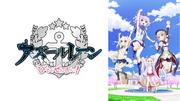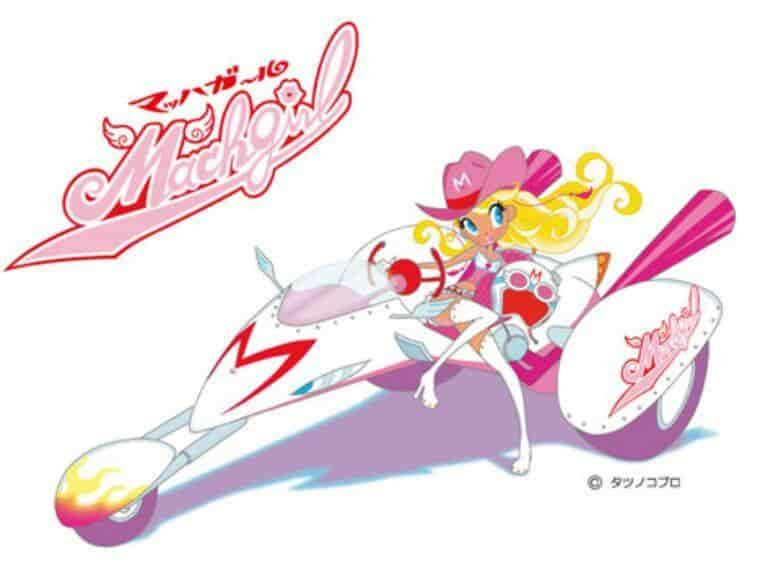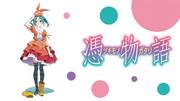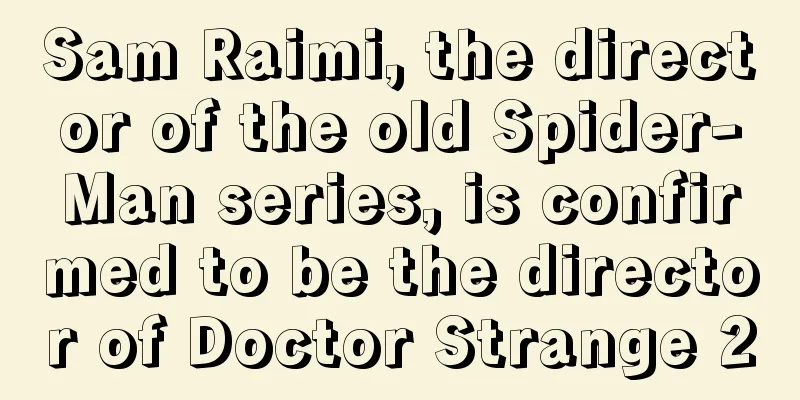Review of "Summer Days with Coo": A story of summer adventure and friendship
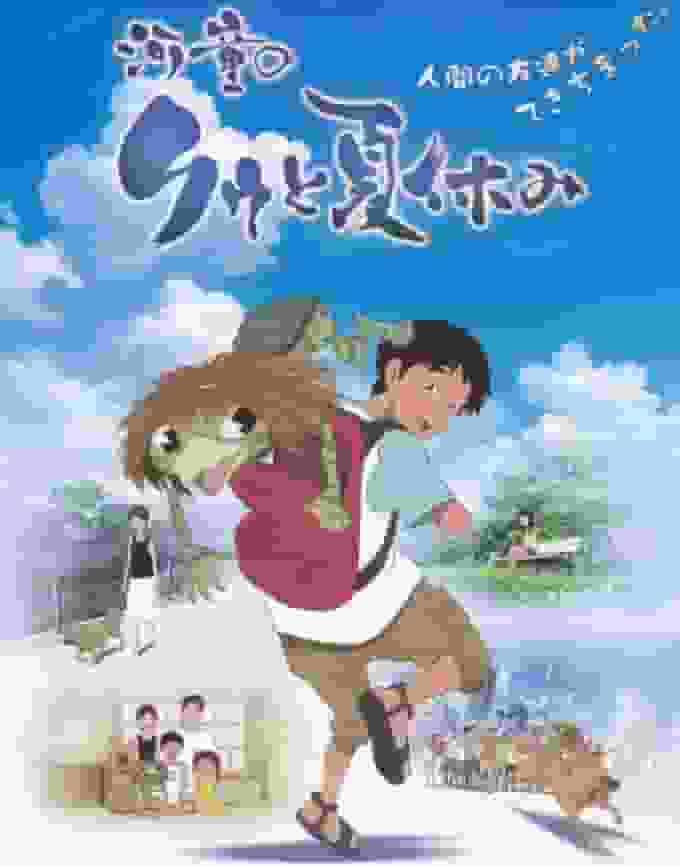
Summer vacation with Kappa Kuu - An emotional journey and family ties■ Public Mediatheater ■ Original Medianovel ■ Release dateJuly 28, 2007 - January 1, 0000 ■Distribution companyShochiku ■Frequencies138 min ■ Number of EpisodesEpisode 1 ■Original StoryMasao Kogure ■ DirectorKeiichi Hara ■ ProductionAnimation production: Shinei Animation Production: "Summer Days with Coo" Production Committee (Shinei Animation, Shochiku, Dentsu, Dentsu Tech, Sony Music Entertainment, SKY Perfect Wellthink, Mitsui & Co., TV Asahi) ■Works©2007 Masao Kogure / "Summer Days with Coo" Production Committee ■Explanation"Summer Days with Coo" is a film that reminds us of the important things that Japanese families are losing. The film begins with Koichi Uehara, a fifth-grader living in Higashikurume, Tokyo, finding a large stone on his way home from school one day just before summer vacation. When Koichi brings the stone home and tries to wash it with water, a young kappa appears from inside the stone! Koichi was surprised, but decided to name the charming kappa "Kuu" after the kappa's first words, "Kuu." Kuu spoke the same language as Koichi and his friends, and revealed that he had been trapped underground for the past several hundred years. Koichi's family could not hide their surprise at the sight of a kappa, a legendary creature, but his father Yasuo agreed to let Kuu live in the house, and decided to leave work early to spend time with Kuu. Their mother, Yukari, was creeped out by Kuu and initially opposed him living with them, but when Kuu saw her putting groceries she had bought at the grocery store into the fridge, she was mistaken for a skilled hunter who had come out hunting for food, and so the two began to become closer (this scene was cut from the main story and included only in the limited edition DVD box). Hitomi, the younger sister, was also not happy that Kuu didn't pay her much attention after he came to live with them, but gradually she began to show understanding. Koichi and Kou shared their meals and sleep together, and even practiced sumo together, which Kou excels at, and lived as a member of the family. However, worried about the excessive reactions of those around them, Kou promised to keep Kou's existence a secret between the family. While they were living happily, one day Kou said he wanted to go back home to his fellow kappa. Having been trapped underground for hundreds of years, Kou had no idea how the outside world had changed. Wanting Kou to know what it was like outside, Kou secretly took him out of the house. Kuu was shocked and depressed to find that there were only humans around, and that there was not a single kappa among his friends. Koichi was heartbroken by this, so they decided to travel together to Tono (Tono City, Iwate Prefecture: famous for the Kappa Bridge), where the kappa legend is still told today, to find other kappas... For Koichi, this was his first trip on his own, away from his parents. Tono, surrounded by magnificent nature, seemed like the perfect environment for a kappa to live in, and Koichi and his friends were excited. Kuu also enjoyed swimming freely in the clean river for the first time in a while, but he couldn't find his friends anywhere. He ended his trip after hearing a story from a townsman that "If you catch a kappa, you'll get 10 million yen!" When they returned home from Tono, they found many reporters from the media swarming around the neighborhood. One of them, a reporter from a weekly photo magazine, demanded to see the rumored "Kappa at the Uehara Family," and forcefully found Kuu and began taking photos. Kuu's existence quickly became known to the public. Things started to get hectic around the family, and Koichi began to be shunned by his friends because of Kuu's presence. Also, perhaps due to the sad nature of being an office worker, his father Yasuo was told by his boss that a client wanted Kuu to appear on television, and he couldn't refuse. Kuu agreed to appear on the show for the sake of the family that had taken care of him, but on the day of the recording, he was very surprised to see the man who appeared as a guest on the show. The man was a descendant of a samurai who had killed Kuu's father long ago. About 300 years ago, Kuu's father, who was an expert fisherman, pleaded with a passing samurai to stop the reclamation of Ryujin Swamp, where many kappa lived, but was slashed to death by the samurai's sword. Unable to bear the fear any longer, Kuu ran out of the recording studio, but there were so many strangers all around him... In a panic, Kuu climbed Tokyo Tower in search of a place where there were no people, but he was so exhausted by the midsummer sun that he was unable to move at the top. Looking down on Tokyo from the tower, Kuu muttered, "There is no quiet place anywhere. This is a human nest. I'm so exhausted. I want to go to Daddy's place..." Koichi, who had been rescued from Tokyo Tower, brought Kuu back to his home. After receiving advice from his classmate Sayoko Kikuchi, whom he had been in love with for a long time, Koichi deeply regretted exposing Kuu to the media. He then decided to take Kuu to a place in Okinawa where kappa still live today... ■Cast・Kuu/Futo Tomizawa, Koichi Uehara, Kandai Yokokawa, Yasuo Uehara, Naoki Tanaka (Cocorico) ■ Main staff・Director, scriptwriter: Keiichi Hara ・Original story: Masao Kogure (based on "Kappa's Big Scream" and "Kappa's Surprise Journey") (Published by Iwasaki Shoten) ■ Theme songs and music・TM1 ・IN1 ・IN2 ・IN3 ■Detailed reviewSummer Days with Coo is a 2007 Japanese animated film inspired by the novels Kappa Daisawagi and Kappa Bikkuri Tabi by Masao Kogure. It was directed by Keiichi Hara, produced by Shin-Ei Animation, and distributed by Shochiku. The film deeply touches audiences by depicting family ties, coexistence with nature, and traditional Japanese culture. The story begins with Uehara Koichi, a fifth-grader, finding a stone on his way home just before summer vacation, when a kappa named Coo appears from it. Coo is a lovable character who ends up living with Koichi's family. However, Coo's existence must be kept a secret, which causes various conflicts within the family. Koichi's mother, Yukari, is initially afraid of Coo, but gradually comes to understand him better. This part symbolizes the importance of family ties and understanding. Koichi and Coo's journey unfolds against the backdrop of the traditional Japanese scenery of Tono, a place known for the legend of the kappa. The people and nature that Koichi and Coo encounter there highlight the difficulty of coexisting with nature in modern society. Coo's journey to find his fellow kappa is also a journey to find his own identity, evoking deep empathy from the audience. However, when Ku's existence becomes known to the media, Koichi's family is thrown into great turmoil. Koichi is especially alienated from his friends, and his father, Yasuo, is under pressure at work. This part of the film depicts privacy issues and the influence of the media in modern society, and contains many thought-provoking elements for the audience. The scene where Kuu appears on a TV show depicts his traumatic past. The past incident where Kuu's father was killed is revealed, highlighting Kuu's emotional scars. This scene depicts how past events affect the present, leaving the audience with a deep emotional response. In the end, Koichi decides to take Coo to Okinawa, a place rich in nature. This decision symbolizes Koichi's growth and the strength of his family bond. The beautiful nature of Okinawa is depicted as the place where Coo will start a new life, giving hope to the audience. ■Reasons for recommendation"Summer Days with Coo" is a deeply moving work that depicts family ties, coexistence with nature, and traditional Japanese culture. In particular, Koichi and Coo's journey is a journey to find one's own identity, and it evokes deep empathy from the audience. When Coo's existence is discovered by the media, Koichi's family is thrown into great turmoil. This part depicts privacy issues in modern society and the influence of the media, and contains many elements that make the audience think. Furthermore, the scene where Kuu appears on a TV show depicts past trauma. The past events in which Kuu's father was killed are revealed, highlighting Kuu's emotional scars. This scene depicts how past events affect the present, leaving the audience with a deep emotional response. Koichi ultimately decides to take Kuu to Okinawa, a place rich in nature. This decision symbolizes Koichi's growth and the depth of the family bond. Okinawa's beautiful nature is depicted as the place where Kuu will start a new life, giving hope to the audience. This work deeply moves the audience by depicting family ties, coexistence with nature, and traditional Japanese culture. In particular, Koichi and Coo's journey, which is also a journey to search for one's own identity, evokes deep empathy from the audience. Furthermore, when Coo's existence becomes known to the media, Koichi's family is thrown into great turmoil. This section depicts issues of privacy in modern society and the influence of the media, and contains many elements that will make the audience think. Furthermore, the scene where Kuu appears on a TV show depicts past trauma. The past events in which Kuu's father was killed are revealed, highlighting Kuu's emotional scars. This scene depicts how past events affect the present, leaving the audience with a deep emotional response. Koichi ultimately decides to take Kuu to Okinawa, a place rich in nature. This decision symbolizes Koichi's growth and the depth of the family bond. Okinawa's beautiful nature is depicted as the place where Kuu will start a new life, giving hope to the audience. This work deeply moves the audience by depicting family ties, coexistence with nature, and traditional Japanese culture. In particular, Koichi and Coo's journey, which is also a journey to search for one's own identity, evokes deep empathy from the audience. Furthermore, when Coo's existence becomes known to the media, Koichi's family is thrown into great turmoil. This section depicts issues of privacy in modern society and the influence of the media, and contains many elements that will make the audience think. Furthermore, the scene where Kuu appears on a TV show depicts past trauma. The past events in which Kuu's father was killed are revealed, highlighting Kuu's emotional scars. This scene depicts how past events affect the present, leaving the audience with a deep emotional response. Koichi ultimately decides to take Kuu to Okinawa, a place rich in nature. This decision symbolizes Koichi's growth and the depth of the family bond. Okinawa's beautiful nature is depicted as the place where Kuu will start a new life, giving hope to the audience. This work deeply moves the audience by depicting family ties, coexistence with nature, and traditional Japanese culture. In particular, Koichi and Coo's journey, which is also a journey to search for one's own identity, evokes deep empathy from the audience. Furthermore, when Coo's existence becomes known to the media, Koichi's family is thrown into great turmoil. This section depicts issues of privacy in modern society and the influence of the media, and contains many elements that will make the audience think. Furthermore, the scene where Kuu appears on a TV show depicts past trauma. The past events in which Kuu's father was killed are revealed, highlighting Kuu's emotional scars. This scene depicts how past events affect the present, leaving the audience with a deep emotional response. Koichi ultimately decides to take Kuu to Okinawa, a place rich in nature. This decision symbolizes Koichi's growth and the depth of the family bond. Okinawa's beautiful nature is depicted as the place where Kuu will start a new life, giving hope to the audience. This work deeply moves the audience by depicting family ties, coexistence with nature, and traditional Japanese culture. In particular, Koichi and Coo's journey, which is also a journey to search for one's own identity, evokes deep empathy from the audience. Furthermore, when Coo's existence becomes known to the media, Koichi's family is thrown into great turmoil. This section depicts issues of privacy in modern society and the influence of the media, and contains many elements that will make the audience think. Furthermore, the scene where Kuu appears on a TV show depicts past trauma. The past events in which Kuu's father was killed are revealed, highlighting Kuu's emotional scars. This scene depicts how past events affect the present, leaving the audience with a deep emotional response. Koichi ultimately decides to take Kuu to Okinawa, a place rich in nature. This decision symbolizes Koichi's growth and the depth of the family bond. Okinawa's beautiful nature is depicted as the place where Kuu will start a new life, giving hope to the audience. |
Recommend
The prototype of "The Terminal" died at the age of 76 and lived in a French airport for 18 years
Different destinies, different lives. On November...
The appeal and reviews of "PAPUWA": A thorough analysis of the appeal of this humorous adventure anime
PAPUWA - Papua - Appeal and reputation ■ Public M...
New character settings for the animated film "Jujutsu Kaisen 0" will be released on December 24
The latest animated film of the extremely popular...
Will Smith's Bad Boys 4 will be released in summer 2024
As a representative work of Hollywood black comed...
The filming scene of the movie adaptation of "Five Nights at Freddy's 2" was allegedly leaked
"Five Nights at Freddy's", co-produ...
The appeal and reputation of "The Thousand and One Nights": A thorough analysis of the profound story and the appeal of the characters
The appeal and evaluation of "Tales of the T...
New poster for Transformers: Rise of the Power Warriors released
The new poster of "Transformers: Rise of the...
Nintama Rantaro Season 23: A new adventure and a path of growth
The appeal and evaluation of the 23rd season of &...
Netflix's The Witcher reviewers release their first impressions without spoilers
Although Netflix's The Witcher TV series revi...
Over 1 million people petitioned to remake Game of Thrones Season 8, and the screenwriter was criticized for incompetence
According to foreign media reports, before the de...
Rebecca Ferguson posted a photo with Tom Cruise after filming Mission: Impossible 7
Recently, Rebecca Ferguson shared a photo with To...
Jesus and Buddha are passionately involved! The latest trailer for the sequel of the bizarre comic adaptation "Saint Brothers"
The new leader in the island nation's imagina...
DC superhero movie "Blue Beetle" releases final trailer
The DC superhero movie "Blue Beetle" re...
Review of the movie "Shima Jiro": What is the appeal of the prince of the sparkling kingdom?
Review and recommendation of the movie "Shim...
The latest visual image of the manga-adapted animation "Kubo-san Won't Let Me Go" is released
The official comic-adapted TV animation "Kub...



